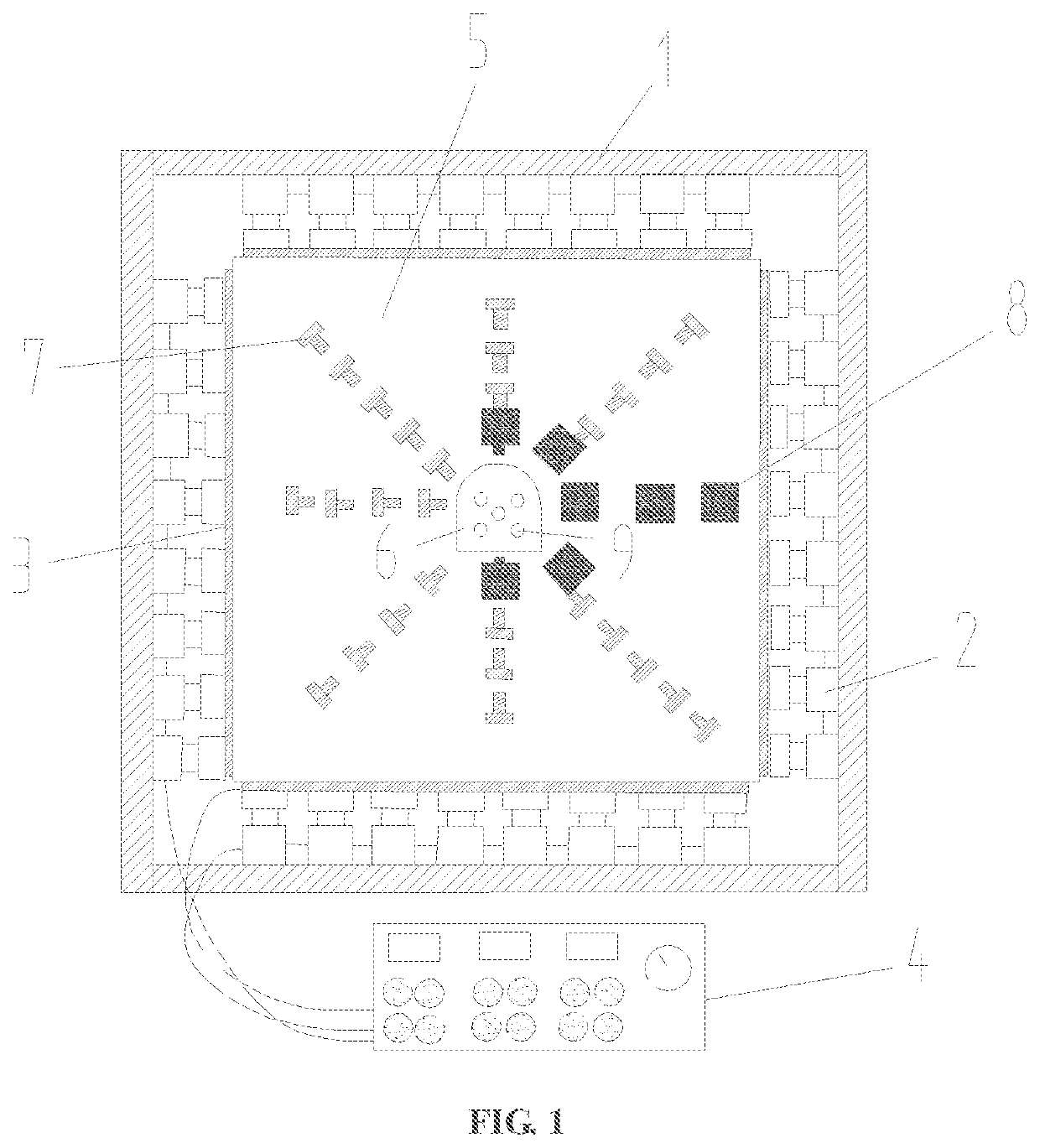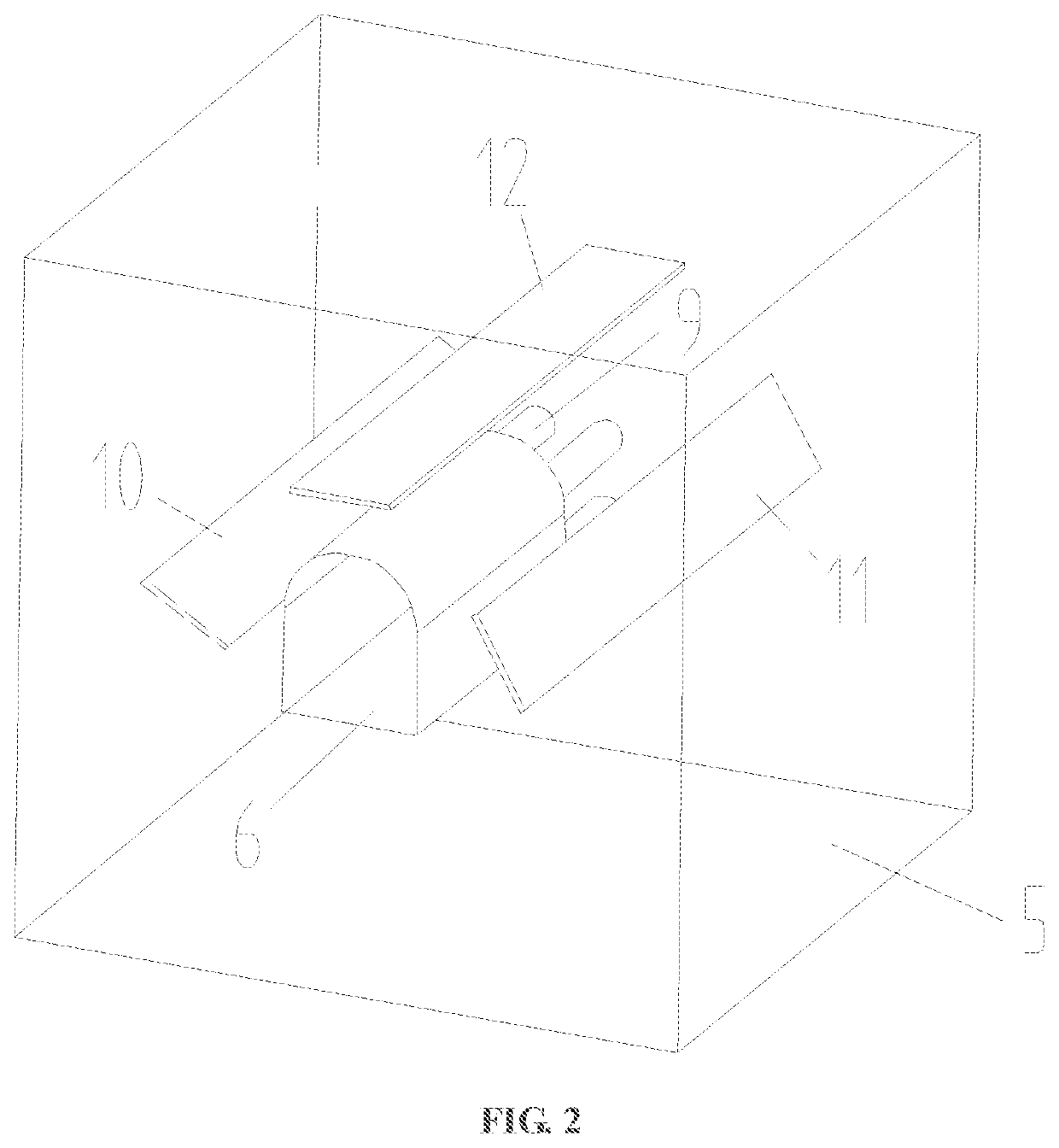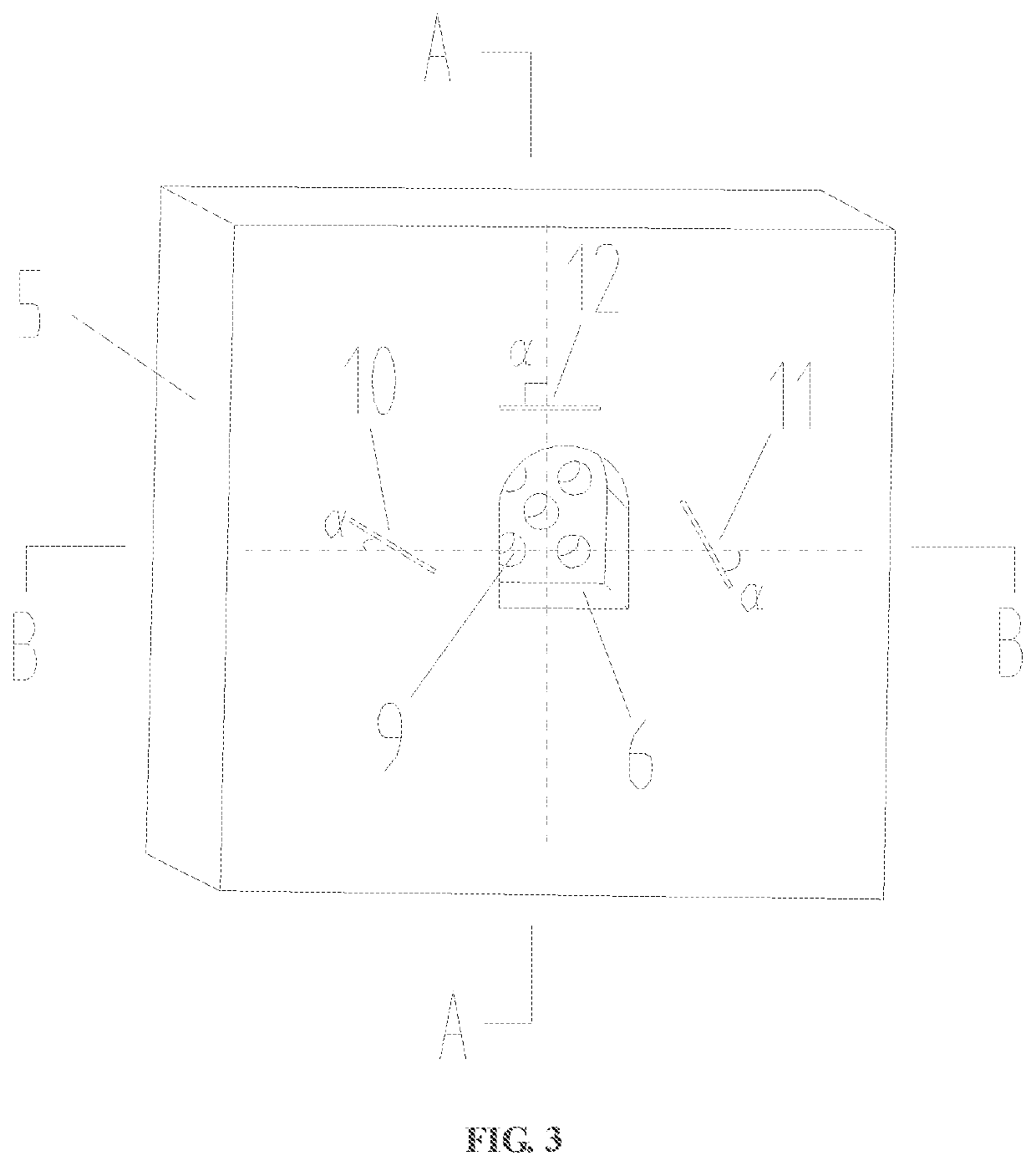System and method of monitoring vibration of a blasting model test for a jointed rock mass
a technology of vibration monitoring and model, applied in the field of deep rock mechanics, can solve the problems of inability to capture and analyze crack evolution process and cracking mechanism of jointed rock mass under blasting load in real time, and the test means used in this test cannot monitor both the impact of blasting stress waves on the stability of existing jointed-surrounding-rock tunnels and the impact of blasting stress waves on the stability of jointed rock masses
- Summary
- Abstract
- Description
- Claims
- Application Information
AI Technical Summary
Benefits of technology
Problems solved by technology
Method used
Image
Examples
first embodiment
[0046]In a first embodiment, an improved system of monitoring vibration of a blasting model test for a jointed rock mass includes: a loading subsystem for three-way load, a model-surface blasting-vibration acquisition subsystem, and a model-interior dynamic stress-strain acquisition subsystem. The loading subsystem for three-way load includes a reaction frame 1, a hydraulic jack 2, a force transfer plate 3, and a three-way pressure control console 4. The model-surface blasting-vibration acquisition subsystem includes a three-dimensional strain rosette 7, an ultra-dynamic resistance strain gauge, a dynamic test analyzer, and a blasting vibration monitor 8. The model-interior dynamic stress-strain acquisition subsystem includes fiber grating strain sensors 13, and PVDF (Polyvinylidene fluoride) piezoelectric pressure sensors 14.
[0047]The three-dimensional strain rosette 7 and the blasting vibration monitor 8 are both arranged on a non-loading surface of a jointed rock mass model 5. Th...
second embodiment
[0057]In a second embodiment, the method for monitoring blasting vibration of a jointed rock mass includes the following steps one to eight.
[0058]In step one, determination of relevant dimensions of a jointed rock mass model: an existing tunnel of the jointed rock mass model is enabled to be a circular cavity commonly used in deep underground engineering; an excavation diameter Φ1 and a tunneling depth d1 of the existing tunnel 6 are determined according to a similar theory and a size of the jointed rock mass model; a diameter Φ2 and a depth d2 of each of blasting holes 9 are determined; sheet mica with different angles is fixed in a mold according to test needs; and a first layer of transparent rock-like material is poured, where a pouring thickness is equal to a difference value among a thickness d of the mold, the tunneling depth d1 and the depth d2 of each of the blasting holes.
[0059]In step two, reservation of the blasting holes: seamless steel pipes are preset at a center of a...
PUM
 Login to View More
Login to View More Abstract
Description
Claims
Application Information
 Login to View More
Login to View More - R&D
- Intellectual Property
- Life Sciences
- Materials
- Tech Scout
- Unparalleled Data Quality
- Higher Quality Content
- 60% Fewer Hallucinations
Browse by: Latest US Patents, China's latest patents, Technical Efficacy Thesaurus, Application Domain, Technology Topic, Popular Technical Reports.
© 2025 PatSnap. All rights reserved.Legal|Privacy policy|Modern Slavery Act Transparency Statement|Sitemap|About US| Contact US: help@patsnap.com



